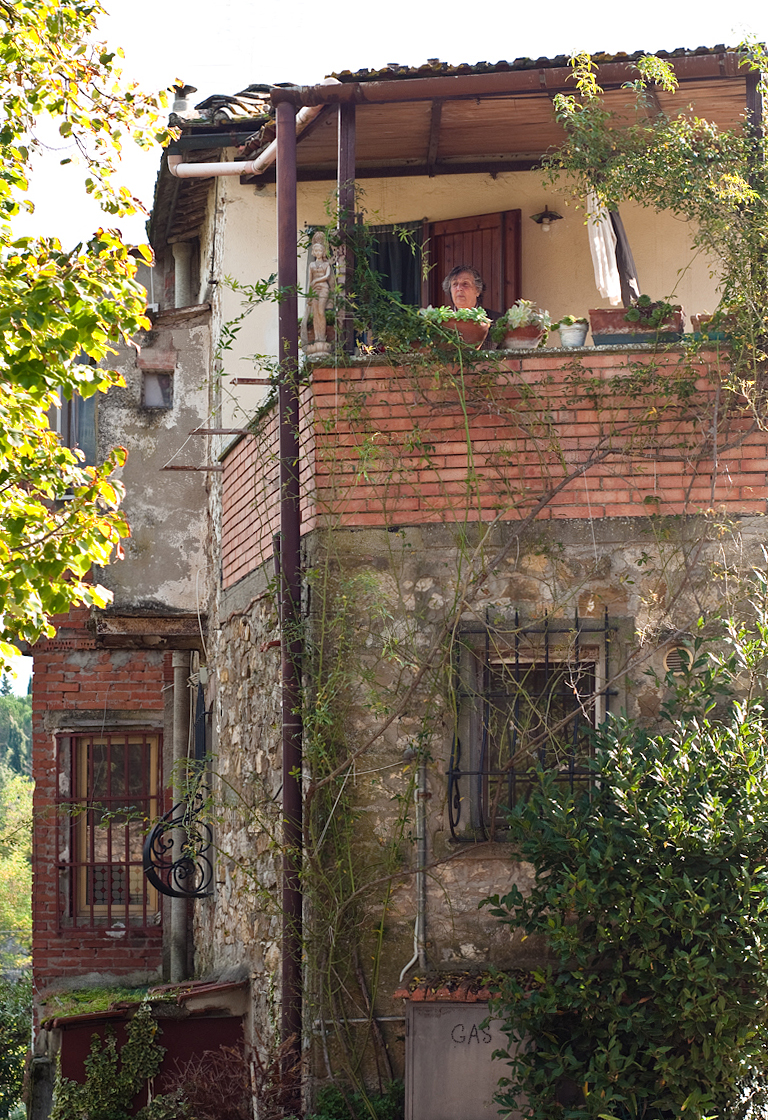Postcards from Chianti - Tuscan Beans
Fagioli al Fiasco is an old fashioned method of cooking traditional Tuscan Beans. As the name implies, the iconic Chianti bottle (a fiasco) is used as the cooking vessel.
Historically, when most Tuscan homes were heated by a large central fireplace, a fiasco of beans, water, and olive oil was placed on the edge of the hearth in the smoldering ashes to cook slowly overnight. This ingenious cooking method is less common nowadays. I'm still drawn to the romance of the idea, so I had to give it a try. In the absence of a fireplace, I tested the recipe by placing the Chianti bottle of beans in a double boiler on top of the stove. The results were fantastic, the beans were tender but not mushy and had taken on the flavours of the garlic and sage nicely.
To prepare Tuscan beans in a fiasco, first you will need to strip off the straw bottom of a Chianti bottle, and a small wad of cheesecloth to act as a loose cork for the opening of the bottle.
Ingredients for a 750ml fiasco:
- 200 grams of dry cannellini beans
- 4-5 fresh sage leaves
- 3 cloves of garlic, peeled
- 1/4 cup extra virgin olive oil
- 3-4 whole black peppercorns
Preparation:
First, soak the dry beans overnight covered in water.
To cook the beans, drain soaking liquid and pour the beans into the fiasco. Add the garlic, sage, peppercorns, and extra virgin olive oil to the bottle. Then, fill the fiasco with water to approximately 3/4 full. Cork the fiasco with a wad of damp cheesecloth. This will allow some steam to escape. In a tall stockpot, with a folded tea towel submerged in 3-4 inches of barely simmering water, place your fiasco on top of the folded towel. Cook for 4 hours on the lowest possible heat. You will need to add more water to stockpot periodically as it evaporates. I found I needed to add about a cup of warm water 3 times during the cooking time.
Once the cooking process is done, all of the water and most of the oil in the fiasco will have been absorbed by the beans. You can serve the beans hot or cold, adding more olive oil, fresh sage, and caramelized shallots.
I don't think a fiasco will replace my slow cooker when in comes to cooking beans at home. The slow cooker is so much more convenient, I do plan to try this on our next camping trip though.
I learned of this traditional preparation for Tuscan beans from Stephano, the proprietor of L'Accademia Del Buon Gusto in Panzano. His wonderful shop is filled with a great selection of wine, olive oil, balsamic vinegar, honey, and local art work. There is no such thing as a quick visit to Stefano's shop, you will be encouraged to taste everything. Stephano is a fountain of information about all things local; food, wine, history. He was the first person we met when we arrived in town. You can't miss him, listen for the sound of Italian opera, and you'll find Stephano. He's the guy wearing a giant red chef's hat and a Cheshire cats grin.
Accademia Del Buon Gusto- Panzano in Chianti
Panzano is an ancient town, it's roots can be traced back to the Etruscans between the 3rd and 5th century B.C. There are remains of the 12th century castle walls and towers still standing next to the town's church, Santa Maria Assunta. The church was rebuilt in the late 1800's on the site of the original 12th century structure. It houses several paintings dating from the 14th, 15th, and 16th centuries.
Santa Maria Assunta, Panzano in Chianti
Perched on the highest ridge running between the Val di Greve from the Val di Pesa in the heart of Chianti, surrounded by olive groves and a patchwork of vineyards, the views from Panzano are extraordinary.
Morning chores in the vineyards, Panzano in Chianti.
Our view at dusk, the hills of Chianti.
We rented an apartment in the oldest part of town, just a few doors down from the church, as our base for exploring this corner of Tuscany. Each time I scaled the deeply worn stone stairs leading to our second floor apartment, I wondered how many generations it must have taken to cause such erosion. I couldn't help but imagine the many different pairs of feet that must have gone before my own. I pictured leather sandals, followed by wooden clogs, rubber boots, and then stilettos. That staircase had certainly seen some changes over it's lifetime.
My dream vehicle, the Ape50, passes the front door of our rental.
Streets are narrow, and mostly one way, so it's a whole lot easier to navigate Panzano on foot than in a vehicle. I quickly discovered many pathways providing convenient shortcuts through the village as well as a few glimpses into backyards and daily life in rural Tuscany.
Tending the herb garden on the balcony, Panzano in Chianti.
Through the gate- stem and skins fresh from the crusher, local winemakers are hard at work.
There are dozens of wineries to visit within a few kilometers of Panzano, as well as several olive oil producers. You won't have any trouble finding a great place to eat, Panzano is home to several amazing restaurants, including three establishments run by the famous butcher of Tuscany, Dario Cecchini. Check back soon for my next postcard from Chianti, a visit to Dario's Antica Macelleria Cecchini and recipe inspired by his Solociccia menu.

















